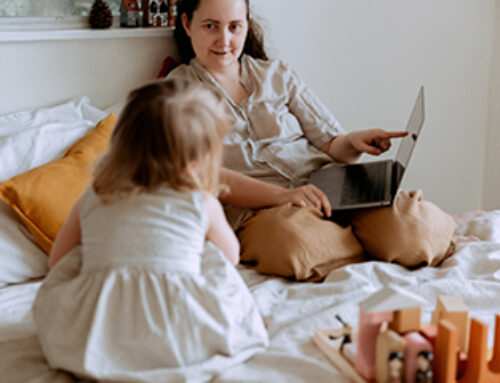As a Chicago-based clinic, we’re no strangers to the snow, ice, and wind chill that winter brings. As any Windy City resident will tell you, it’s all about layering and bundling up to protect yourself from the frigid temperatures! Gloves, hats, boots, and jackets can be a challenge for children with autism, ADHD, down syndrome, or decreased fine motor skills, visual-motor skills, body in space awareness, or coordination, but our Occupational and Physical Therapy teams are here to help.
Here are some tips on how you can assist your child with their cold-weather self-help skills and promote their independence.
Gloves: Using glove or mitten clips that attach each glove to each jacket sleeve is an easy way to set your child up for success. Cue them to utilize their opposite hand to “catch the fingers” of the other hand into the opening of the glove. “Pull down, down, down,” and they should be set!
Hats: Storing your child’s hat in one of their jacket sleeves is another great organization and set-up strategy. First, cue them to find the opening of the hat where their hands will go. Then prompt them to use both hands to hold the hat on each side to again, “Pull down, down, down,” over their head. Using a mirror could be helpful for this one!
Boots: Prompt them to hold the opening of the boot with one hand on each side. They should “catch the toes” of their foot before “pulling up, up, up”!
Jackets: There are two popular methods for kids to don their jackets more independently. First is the “Hood Method.” Cue them to put the hood on with the jacket hanging behind them. Then, prompt them to reach behind their body with one arm at a time to slip into the sleeves. Next is the “Flip Over Method.” Assist them in orienting their jacket with the inside facing up on the floor and with the hood closest to their feet. Cue them to bend over, slip their arms into the jacket, then flip it over their head as they stand up. Keep in mind that this method requires a bit more range of motion in the upper extremities. A fun way to work on the tricky part of engaging the zipper is making it a game as you assist them in using two hands: one hand to hold the zipper (“garage”) all the way down and the other hand to hold the other side (“car”). They can “park the car in the garage” and then “close the garage door” by pulling the zipper up!

Blue Bird Day fosters socialization, sensory regulation, and pre-academic learning in children ages 2-7 years in therapeutic rotations that simulate preschool and kindergarten settings. Our compassionate therapists practice a relationship-based and family-centered approach, provide parent training, and collaborate on goals and individualized intensive treatment plans for your child.
We believe in a collaborative and multi-disciplinary team approach to therapy. A team of occupational therapists, speech-language pathologists, dietitians, developmental therapists, behavioral therapists, physical therapists, and therapeutic assistants are created for each child to ensure child and family are fully supported and the best possible results are achieved.
Options for individualized, group and virtual therapy sessions are available as well.
Want to learn more or you have a specific question? Feel free to connect with us here!



